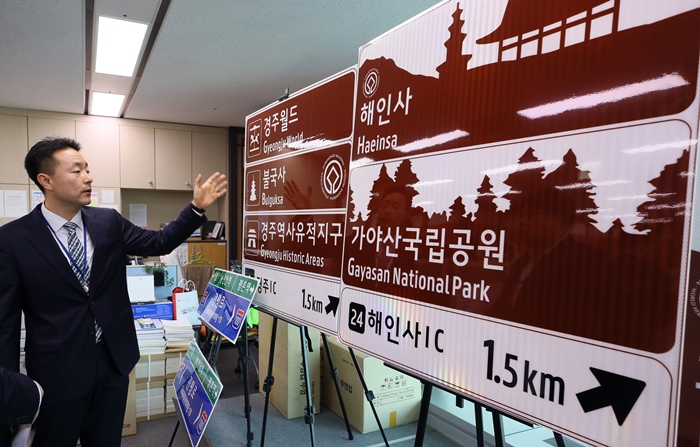
An official from the Ministry of Land, Infrastructure and Transport on March 13 shows samples of new road signs for cultural heritage sites at the Government Complex Sejong. (Yonhap News)
By Kim Hyelin and Lee Hana
The country's English-language road signs, a source of confusion to many road users due to inconsistent romanization, will be overhauled by year's end, the Ministry of Land, Infrastructure and Transport said on March 13.
To standardize the English names of places in the most effective way, the ministry designated six categories: natural locations, landmarks, cultural heritage sites, roads, administrative districts and administrative bodies. The new rules were based on a guideline for standardized terminology from the Ministry of Culture, Sports and Tourism.
For example, the river that flows through Seoul will be called the "Hangang River," replacing variations like the "Han River" or "Hangang." The term "Gwangjang Market" will become the standard over alternatives like "Gwangjangsijang."
Designs for highway road signs, which now show both the place name and tourist sites, will also undergo a revamp. A separate sign will be set up for tourist sites 1.5 km before a highway exit. Cultural heritage sites to be featured on such signs include the Gyeongju Historic Areas, Andong Hahoe Folk Village, Haeinsa Temple and Namhansanseong Fortress.
The font size for road signs will be enlarged from 22 cm to 24 cm to improve visibility for drivers with low vision.
Chang Young-soo, director of the Land Ministry’s Road Bureau, said, "We've taken measures to standardize our road signs to be more considerate of older drivers, foreign tourists and the changing environment. After a series of public hearings, we will finalize the new designs and implement the updates by the end of the year."
kimhyelin211@korea.kr